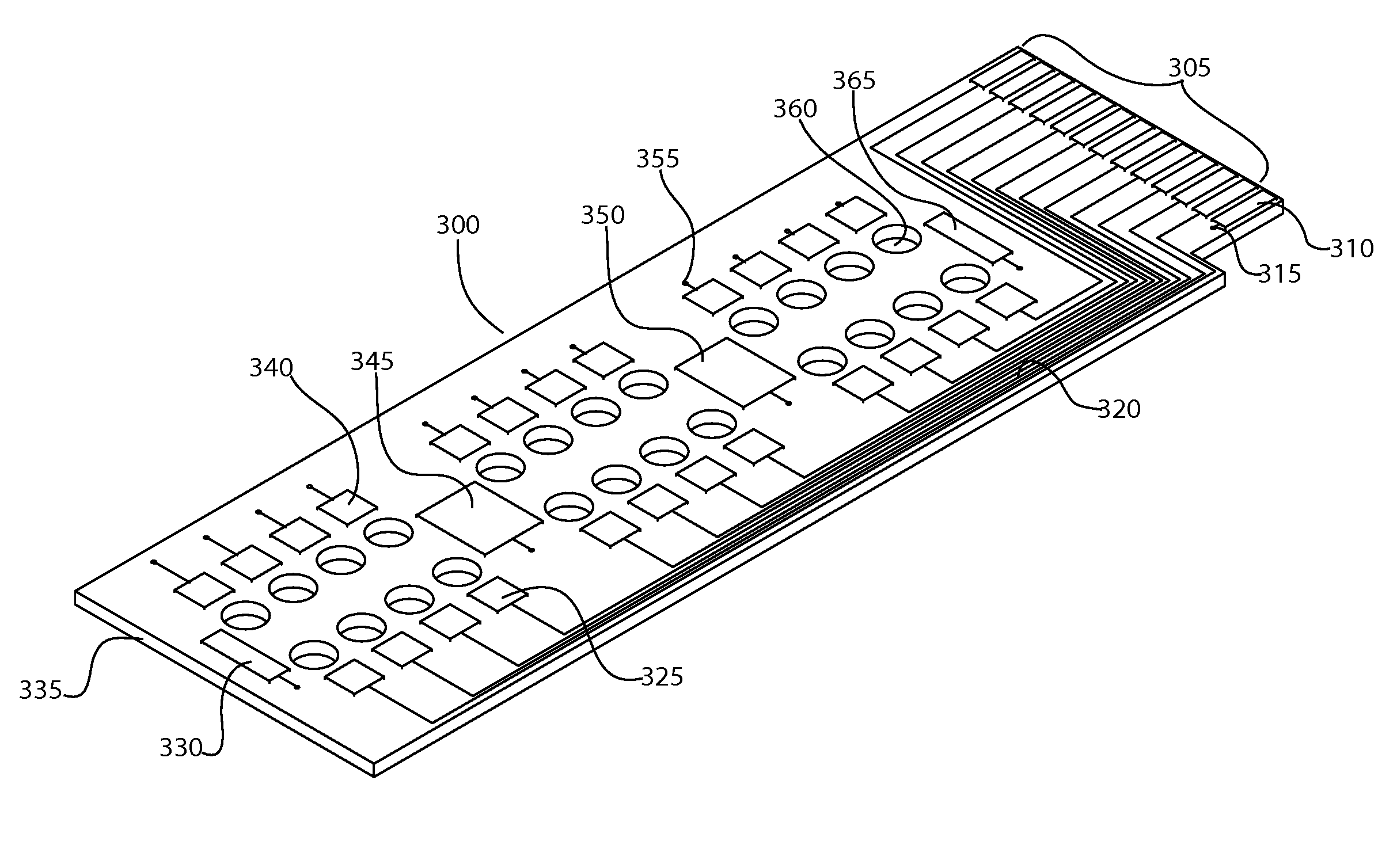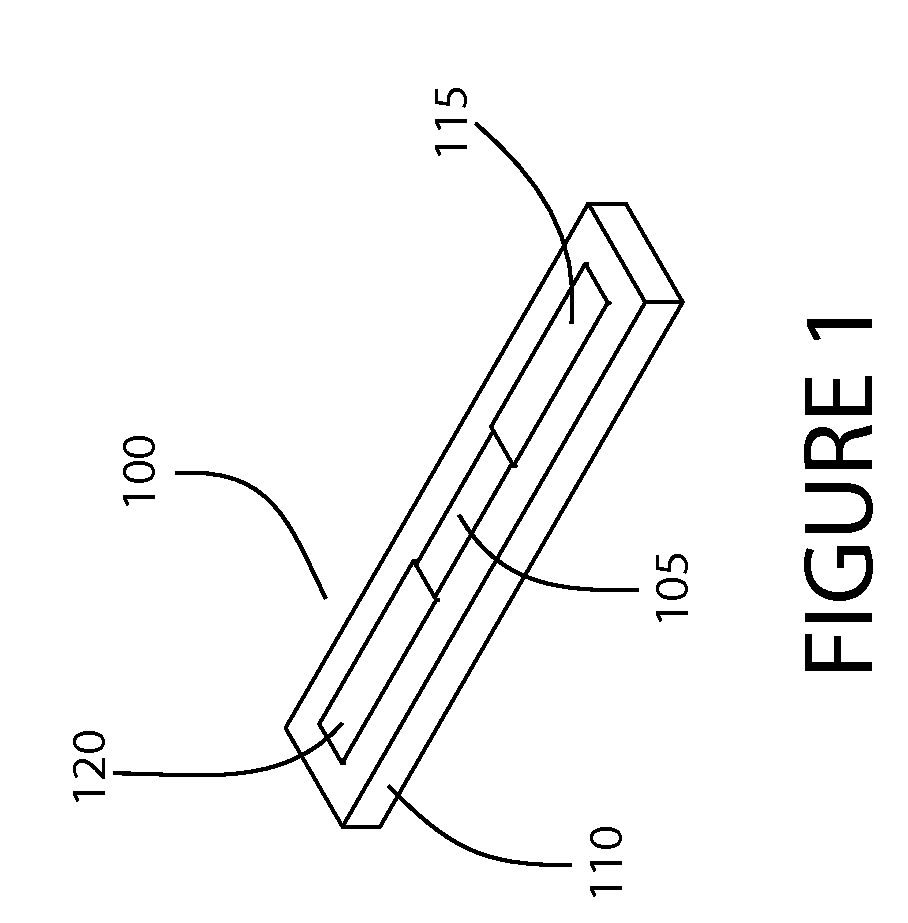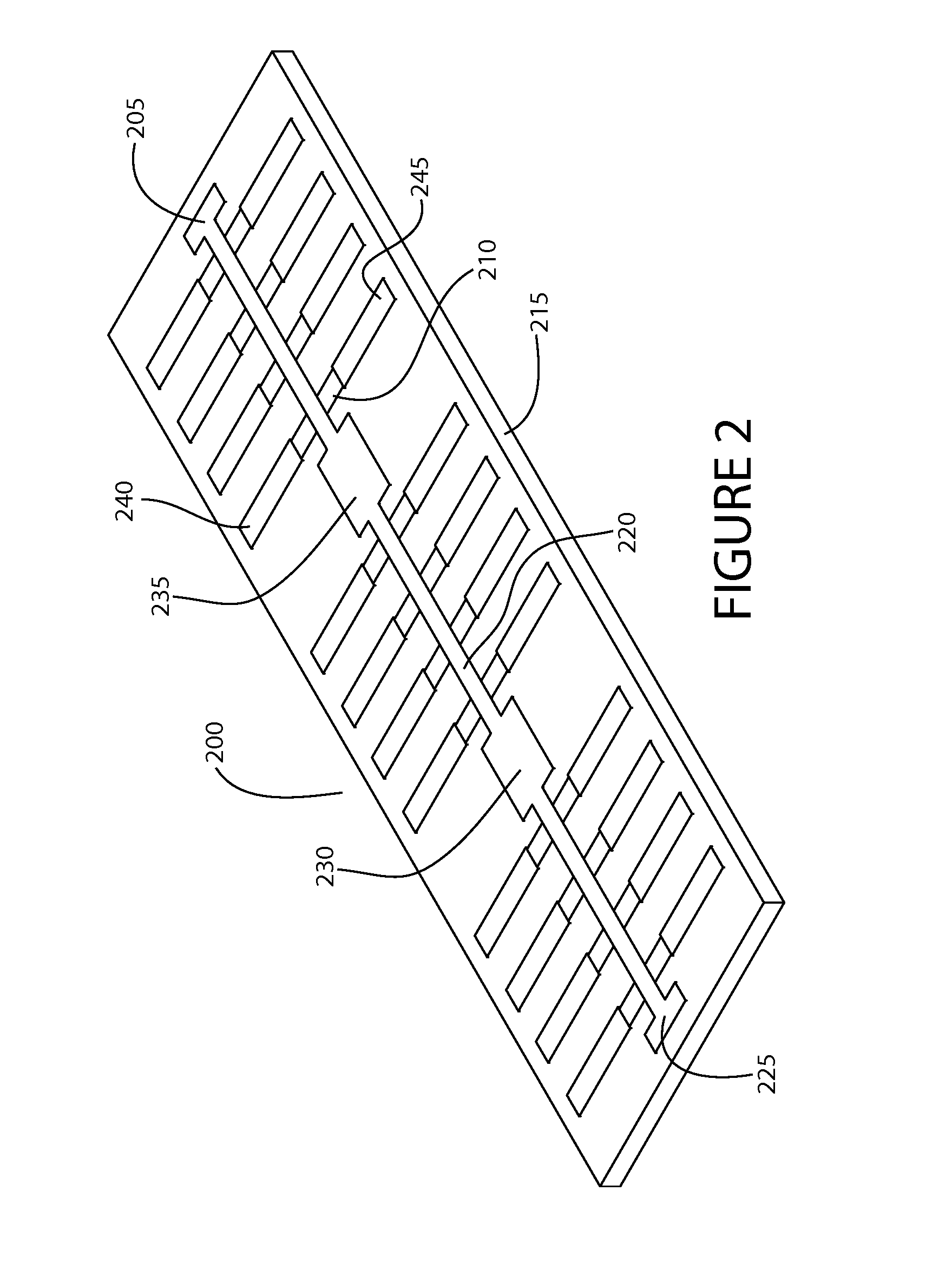Nanocrystalline indium tin oxide sensors and arrays
- Summary
- Abstract
- Description
- Claims
- Application Information
AI Technical Summary
Benefits of technology
Problems solved by technology
Method used
Image
Examples
Embodiment Construction
[0037]Referring to the Figures, in which like parts are indicated with the same reference numerals, various views of an exemplary sensor and a sensor array according to principles of the invention are shown. In general, an exemplary sensor according to principles of the invention comprises a nanocrystalline indium tin oxide (ITO, or tin-doped indium oxide) thin film applied to a substrate. The indium tin oxide film comprises a mixture of indium(III) oxide (In2O3) and tin(IV) oxide (SnO2), by way of example and not limitation 90% In2O3 and 10% SnO2 by weight. The substrate is an electrical insulator that is compatible with the process of forming the ITO thin film. By way of example and not limitation, glass, alumina Al2O3, silicon, silicon dioxide SiO2 or another compatible material may be utilized as the substrate. A pair of electrodes is conductively coupled to the film. The electrodes are configured for coupling to an electrical measurement device, such as an ohmmeter. Electrical ...
PUM
 Login to View More
Login to View More Abstract
Description
Claims
Application Information
 Login to View More
Login to View More - R&D
- Intellectual Property
- Life Sciences
- Materials
- Tech Scout
- Unparalleled Data Quality
- Higher Quality Content
- 60% Fewer Hallucinations
Browse by: Latest US Patents, China's latest patents, Technical Efficacy Thesaurus, Application Domain, Technology Topic, Popular Technical Reports.
© 2025 PatSnap. All rights reserved.Legal|Privacy policy|Modern Slavery Act Transparency Statement|Sitemap|About US| Contact US: help@patsnap.com



